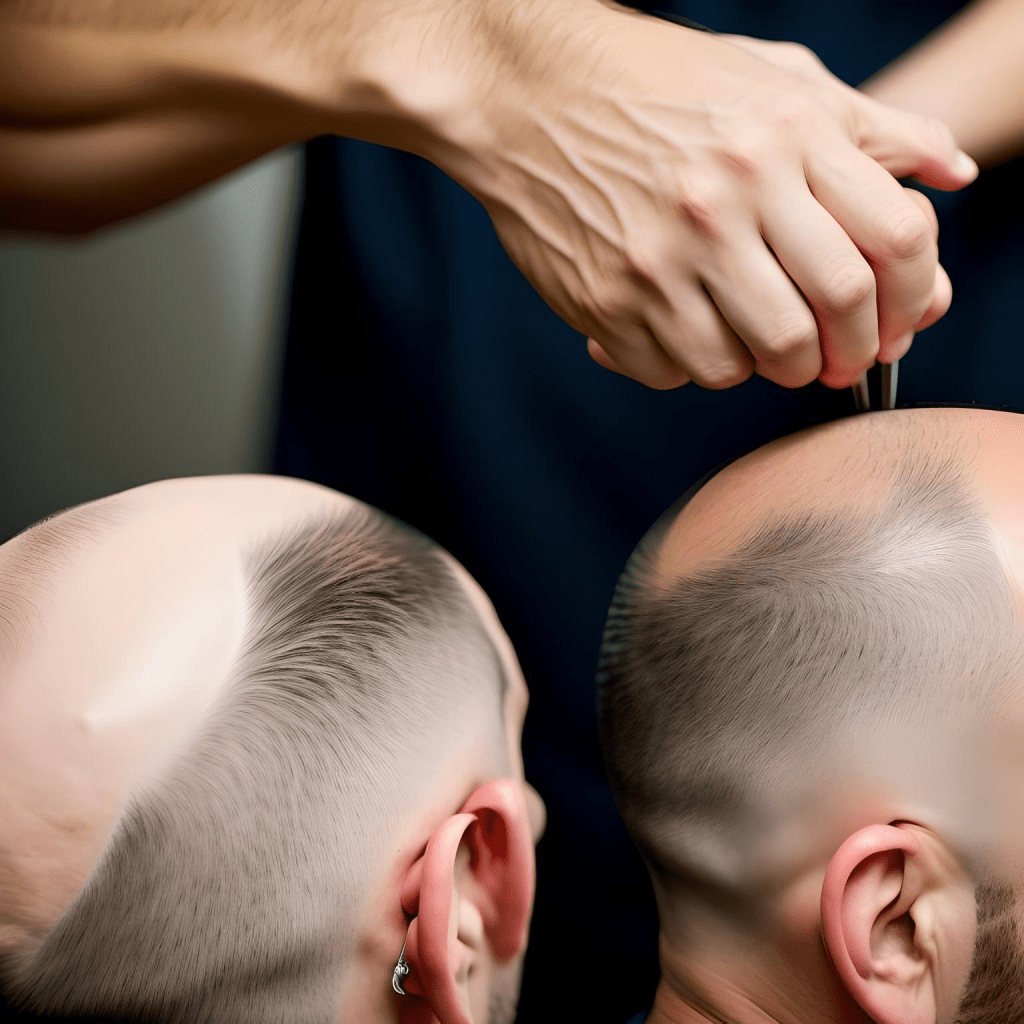How to Reverse the Baldness ? Is it Possible Now?
There has been ongoing research into reversing baldness, with several promising developments in recent years. One area of focus is on understanding the mechanisms that regulate hair growth and loss, and identifying new targets for treatment.
One approach that has shown promise is the use of drugs that inhibit the activity of the enzyme 5-alpha-reductase, which is involved in the conversion of testosterone to dihydrotestosterone (DHT). DHT is a hormone that is known to contribute to hair loss in men, and blocking its production can help to promote hair growth. Finasteride and dutasteride are two drugs that are currently available and approved by the US Food and Drug Administration (FDA) for the treatment of male pattern baldness.
Another approach involves the use of stem cells to promote hair growth. Researchers have been exploring the use of mesenchymal stem cells, which can differentiate into a variety of cell types, including hair follicles. Preliminary studies have shown that injecting these stem cells into the scalp can promote hair growth in both men and women.
Additionally, there has been research into using platelet-rich plasma (PRP) therapy to stimulate hair growth. PRP is a substance that is derived from a patient’s own blood and contains growth factors that can promote tissue regeneration. When injected into the scalp, it can help to promote hair growth.
Overall, while there is still much to learn about the mechanisms behind hair growth and loss, there are several promising avenues of research that could lead to effective treatments for baldness in the future.

Reversing the baldness with senescent pigment cells
Senescent pigment cells, also known as senescent melanocytes, are cells that have entered a state of permanent growth arrest and are no longer able to divide. These cells accumulate in aging skin and hair follicles and are thought to contribute to age-related hair loss.
Recent research has suggested that targeting these senescent pigment cells may be a potential avenue for reversing baldness. One study published in the journal Nature in 2021 found that the clearance of senescent cells in aging mice with a genetic predisposition for hair loss led to increased hair growth and improved hair quality.
The researchers used a drug called ABT-263, which selectively induces apoptosis (cell death) in senescent cells, to clear the senescent pigment cells from the mice. The treatment resulted in increased hair growth, improved hair density, and increased pigmentation.
While this study was conducted in mice, it provides promising evidence for the potential of targeting senescent pigment cells as a strategy for reversing baldness in humans. However, further research is needed to determine the safety and efficacy of this approach in humans, as well as to identify the optimal dosing and administration strategies.
Are there any other treatments for reversing baldness?
Yes, there are several other treatments for reversing baldness that have been developed and tested.
One commonly used treatment is hair transplantation, which involves transplanting hair follicles from areas of the scalp where hair is still growing to areas where there is balding or thinning. This can be done using various techniques, including follicular unit transplantation (FUT) and follicular unit extraction (FUE). Hair transplantation is generally considered to be safe and effective, with high success rates and minimal side effects.
Another treatment option is low-level laser therapy (LLLT), which involves using specialized lasers or light-emitting diodes (LEDs) to stimulate hair growth. LLLT is thought to work by increasing blood flow to the hair follicles and promoting the production of cellular energy. While the evidence for the effectiveness of LLLT is mixed, some studies have shown promising results.
Topical medications, such as minoxidil and topical finasteride, can also be used to promote hair growth and prevent further hair loss. Minoxidil is a vasodilator that increases blood flow to the hair follicles, while finasteride works by blocking the conversion of testosterone to dihydrotestosterone (DHT), which is a hormone that can contribute to hair loss.
In addition, there are some natural remedies and supplements that may help to promote hair growth, such as saw palmetto, biotin, and certain essential oils. However, the evidence for the effectiveness of these treatments is limited and more research is needed to determine their safety and efficacy.
Overall, there are several treatment options available for reversing baldness, and the optimal approach may depend on the underlying cause of the hair loss, as well as individual factors such as age, gender, and overall health. It’s important to consult with a healthcare professional or hair restoration specialist to determine the best treatment plan for your specific needs.
What are the side effects of hair transplantation?
Hair transplantation is generally considered to be a safe and effective procedure, with a low risk of serious complications. However, like any surgical procedure, there are some potential risks and side effects associated with hair transplantation.
Some possible side effects of hair transplantation include:
- Pain and discomfort: It is common to experience some mild pain and discomfort in the days following the procedure, which can be managed with over-the-counter pain medications.
- Swelling: Swelling of the scalp, forehead, and eyes is common after hair transplantation, and usually resolves within a few days.
- Bleeding: Some bleeding may occur during and after the procedure, but this is usually minor and resolves quickly.
- Infection: There is a small risk of infection following hair transplantation, which can usually be prevented with antibiotics.
- Scarring: Hair transplantation can sometimes cause scarring, particularly with FUT, where a strip of scalp is removed. However, skilled surgeons can minimize scarring by using advanced surgical techniques.
- Itching: Itching and discomfort in the transplant area is common during the healing process, but can usually be managed with medications.
- Shock loss: In some cases, the transplanted hairs may fall out in the weeks following the procedure, a phenomenon known as “shock loss.” However, this is usually temporary and the hairs will regrow over time.
It’s important to discuss the potential risks and side effects of hair transplantation with your surgeon prior to the procedure, and to follow all post-operative instructions to minimize the risk of complications.



I very delighted to find this internet site on bing, just what I was searching for as well saved to fav
Kariyer Kıbrıs – Kariyerkktc Kariyer Kıbrıs – Kariyerkktc Kıbrıs’ta iş mi arıyorsun? Kıbrıs’ta eleman mı arıyorsun. İşte tam size göre bir web Kariyer Kıbrıs – Kariyerkktc Kariyer Kıbrıs – Kariyerkktc Kıbrıs’ta iş mi arıyorsun? Kıbrıs’ta eleman mı arıyorsun. İşte tam size göre bir web sayfası
Useful article, thank you. Top article, very helpful.
Best best best..
Hi there to all, for the reason that I am genuinely keen of reading this website’s post to be updated on a regular basis. It carries pleasant stuff.